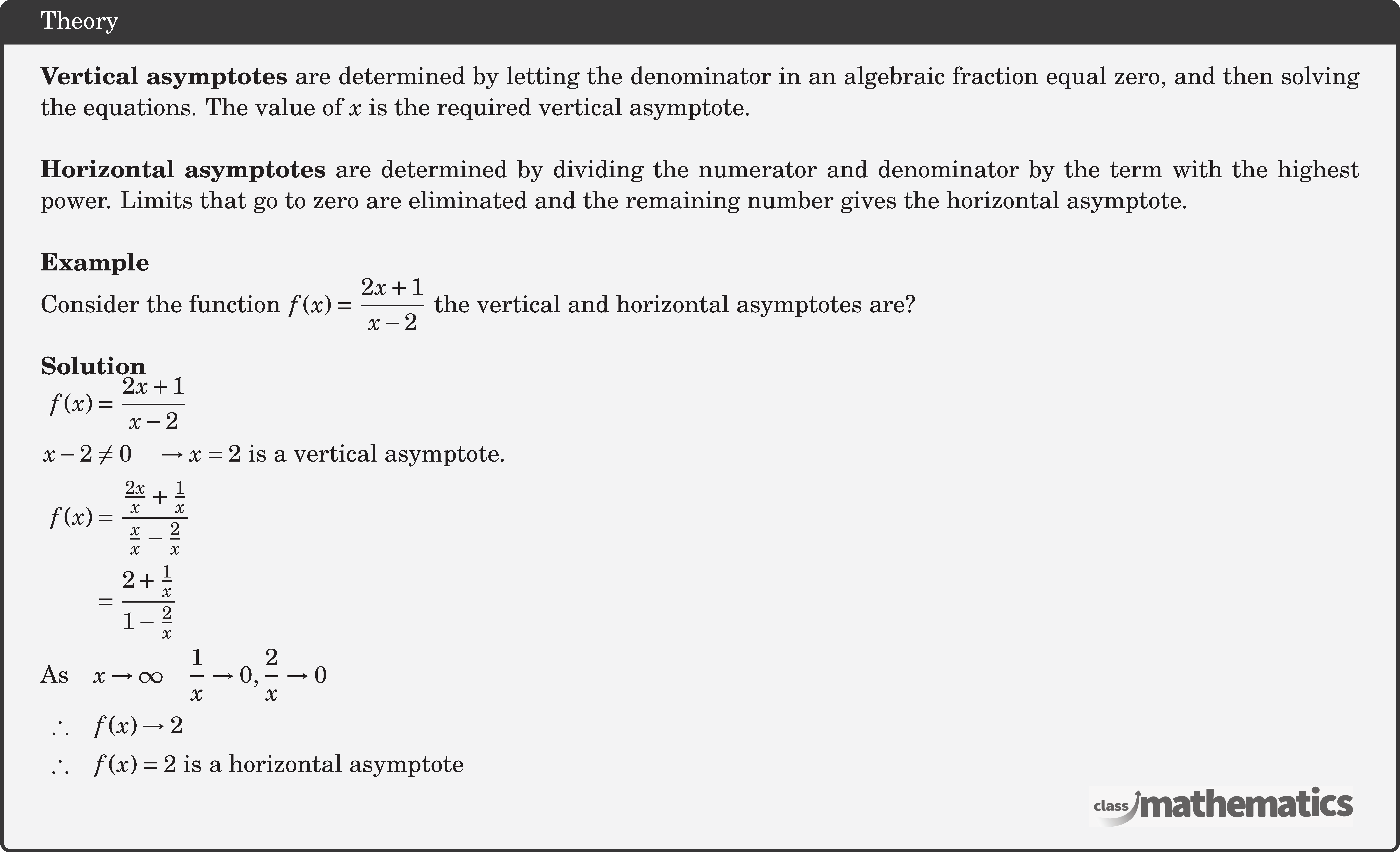Resources for Vertical and Horizontal Asymptotes
-
Questions
11
With Worked SolutionClick Here -
Video Tutorials
1
Click Here
Vertical and Horizontal Asymptotes Theory

